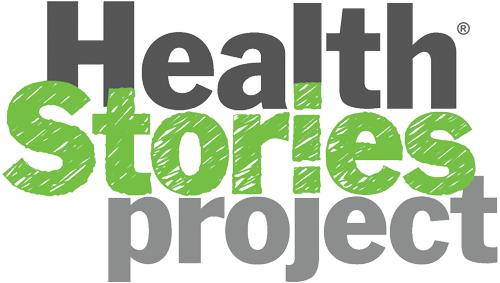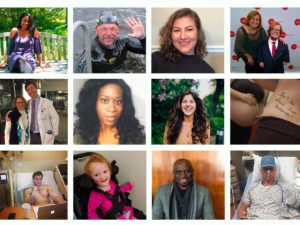When Julie DeMichiel was 10 years old, she had an episode of severe headaches that lasted for about a week, followed by extreme weakness on the right side of her body. At the time, in the 1960s, there was no such thing as an MRI to perform a brain scan, so she and her parents left the hospital under the impression she’d had a stroke.
It wasn’t until 22 years later on her daughter Lisa’s fourth birthday that Julie, now 54, learned she had cerebral cavernous malformations, also known as cavernous angiomas: vascular lesions, typically having a raspberry-like appearance, which can be found in the brain, spinal cord and on the skin and retina. That day, she was blowing up balloons for Lisa’s birthday party and got a massive headache. After being taken to the hospital and having an MRI, her doctors discovered the angiomas and she realized she hadn’t had a stroke as a child after all: It was an angioma bleed that caused her symptoms.
A Hidden Condition
When Julie was diagnosed, medical experts thought that angiomas were very rare-there had only been a handful of reported cases in the U.S. 


Unless someone has an MRI, they could live their whole life and never realize they have angiomas. That’s because it’s not usually the angiomas themselves that cause problems, but bleeds that place pressure on the brain, resulting in complications including seizures, stroke symptoms, hemorrhages, and headaches. Julie has lost 80 percent of hearing in her left ear, and still has severe weakness on her right side as a result of her bleeds.
A Parent’s Nightmare
One day, when Lisa, now 27, was a freshman in college in Providence, Rhode Island, Julie and her husband Jeff received a terrifying phone call.
“She was speaking gibberish. She didn’t know where she was and she couldn’t recall the names of ordinary things,” says Julie. “She was looking out a window and was trying to describe what she was doing but she couldn’t come up with the word ‘window.'”
Lisa’s diving teammates and coach set on a search, and soon found Lisa curled up, lying on a bathroom floor. Julie, who lives in New Hartford, Connecticut, rushed to Providence, but in the meantime, the distance and not knowing what was going on was a devastating experience, she says. An MRI found that Lisa, too, has cavernous angiomas that had caused her to have a grand mal seizure.
[tweet_box design=”default”]”The best thing you can do is talk to people who have gone through what you’re going through.” – Julie, #CavernousAngioma[/tweet_box]
The Genetics of Cavernous Angiomas
There are two types of cavernous angiomas: sporadic cavernous malformation and familial cavernous malformation. The sporadic kind is not genetic and it is believed that most people with angiomas have this kind.



Intent on not allowing the disease to affect a fifth generation of her family, Julie joined the board of the Angioma Alliance, an advocacy and research organization dedicated to finding a cure. So far, she has planned a wine tasting fundraiser near her home, and attended family and research conferences in Chicago and Washington, D.C.
“I met people in similar situations to what me and my family have gone through, but I also met many others who have had it much worse,” says Julie. “Because it’s a hereditary disease, it’s so important that we find a cure to stop it with this generation so we don’t continue to carry it forward.”
Living Cautiously but Living Well
While Julie’s hearing impairment and weak right side impact her life every day, they doesn’t stop her from doing things she loves, like playing with her granddaughter, going for walks, exercising, and going to the beach. She misses out on activities like skiing and ice skating, but had a bicycle custom built that allows her to pedal and operate the brakes in spite of her weakness. Lisa has had a few small seizures since her college days, but luckily hasn’t experienced any long-term complications.



“We have to be a little more vigilant so we can catch problems early if they happen,” says Julie.
And while Julie says it’s disheartening that many doctors-even neurologists-do not know enough about cavernous angiomas, there are drug trials and other research studies underway that are providing hope. Her message to others with cavernous angiomas? You’re not alone.
“The best thing you can do is talk to people who have gone through what you’re going through,” says Julie. “Seek knowledge and know what to look for.”

